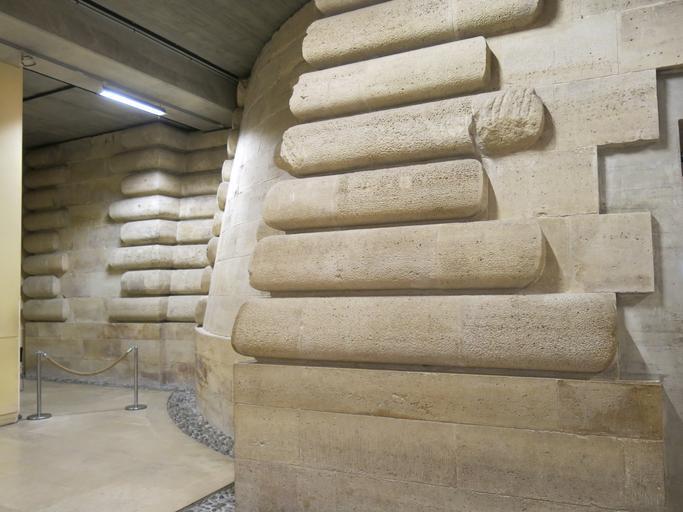MAKE A MEME
View Large Image

| View Original: | Mur le Vau (Louvre).jpg (2816x2112) | |||
| Download: | Original | Medium | Small | Thumb |
| Courtesy of: | commons.wikimedia.org | More Like This | ||
| Keywords: Mur le Vau (Louvre).jpg Art Photo Author info Louis Le Vau architect male fr Mur de contrescarpe de le Vau situÃĐ Ã l'entrÃĐe de l'exposition du Louvre mÃĐdiÃĐval Pendant le rÃĻgne de Louis XIV Louis le Vau achÃĻve la Cour CarrÃĐe Autour des nouveaux bÃĒtiments le Vau fait creuser un fossÃĐ entre des murs d'escarpe et de contrescarpe Un mur de contrescarpe du cÃītÃĐ ouest a ÃĐtÃĐ redÃĐcouvert lors des travaux du Grand Louvre On prÃĐcise qu'un petit pont en pierre permettait de franchir le fossÃĐ pour passer de la cour du Louvre actuelle cour NapolÃĐon au pavillon de l'Horloge Ne doit pas Être confondu avec les murs retrouvÃĐs au Carrousel du Louvre qui sont plus extÃĐrieurs <br /> Counterscarp on the west side of the oldest existing wing of the Palais du Louvre in Paris viewed toward the west-southwest now an archaeological display located east of the MusÃĐe du Louvre's Napoleon Entrance Hall beneath the Pyramid near the entrance to the Medieval Louvre exhibit in the basement of the Sully wing The counterscarp was part of a plan devised by the architect Louis Le Vau for an intermediary courtyard between the Louvre and the Tuileries Palace Bezombes 1994 p 56 Le Vau's wall is less than one meter below ground level one and a half meters wide at the top and extends down to a depth of seven meters Biasini 1989 p 69 During the reign of Louis XIV Le Vau expanded the Louvre to surround the Cour CarrÃĐe and in 1670 designed a ditch around the outside of the quadrangular building with scarp and counterscarp A small stone bridge crossed the ditch between the Cour du Louvre now the Cour NapolÃĐon and the Pavillon de l'Horloge Le Vau died in 1670 and his project was thought never to have been realized so it was a surprise when the counterscarp was discovered in March 1985 during excavations of the Cour NapolÃĐon for the Grand Louvre The discovery caused I M Pei and his architectural team to redesign more than one-third of the Cour Napoleon basement at a time when the preliminary scheme had already been submitted Detailed preliminary blueprints of the modified plan were submitted within six weeks of the discovery Bezombes 1994 p 56; Biasini 1989 p 63 before and after plans p 69 text Le Vau's counterscarp is not to be confused with the scarp and counterscarp of the moat outside the former wall of Charles V located much further west The scarp of Charles V's moat was discovered in 1990 during excavations for the construction of the below-ground Carrousel du Louvre shopping mall Bezombes 1994 pp 175 176 MusÃĐe du Louvre Sully wing first basement level thumb left At the foot of the facade we see the ditch and in the middle the small bridge to cross it Bezombes Dominique 1994 The Grand Louvre History of a Project Paris Le Moniteur ISBN 9782281190793 Biasini Ãmile; Lebrat Jean; Bezombes Dominique; Vincent Jean-Michel 1989 The Grand Louvre A Museum Transfigured 1981 1993 Paris Electa Moniteur ISBN 9782866530662 sf photo date 2015-10-01 Tangopaso photo license 48 860628 2 337436 heading WSW_scale 1000 West facade of the Sully Wing Louvre Louis Le Vau Bossage City walls of Paris | ||||